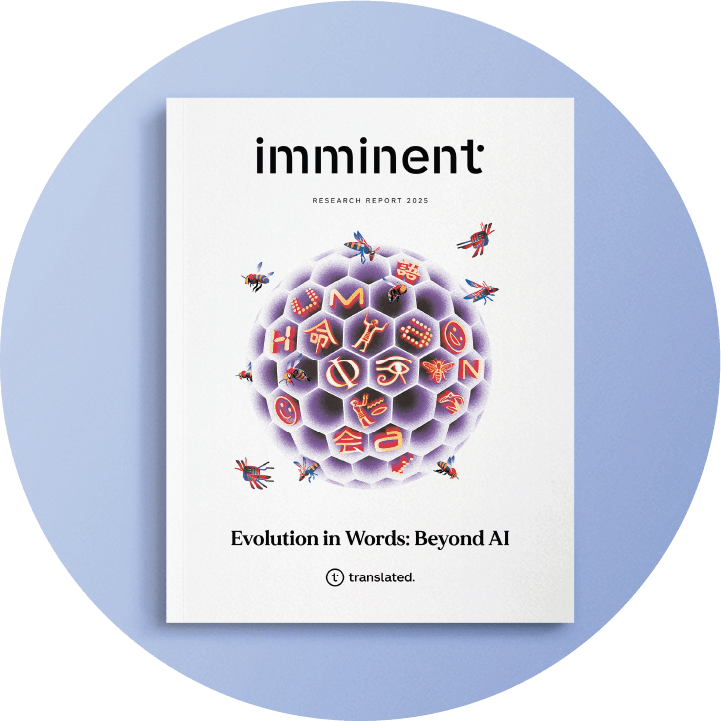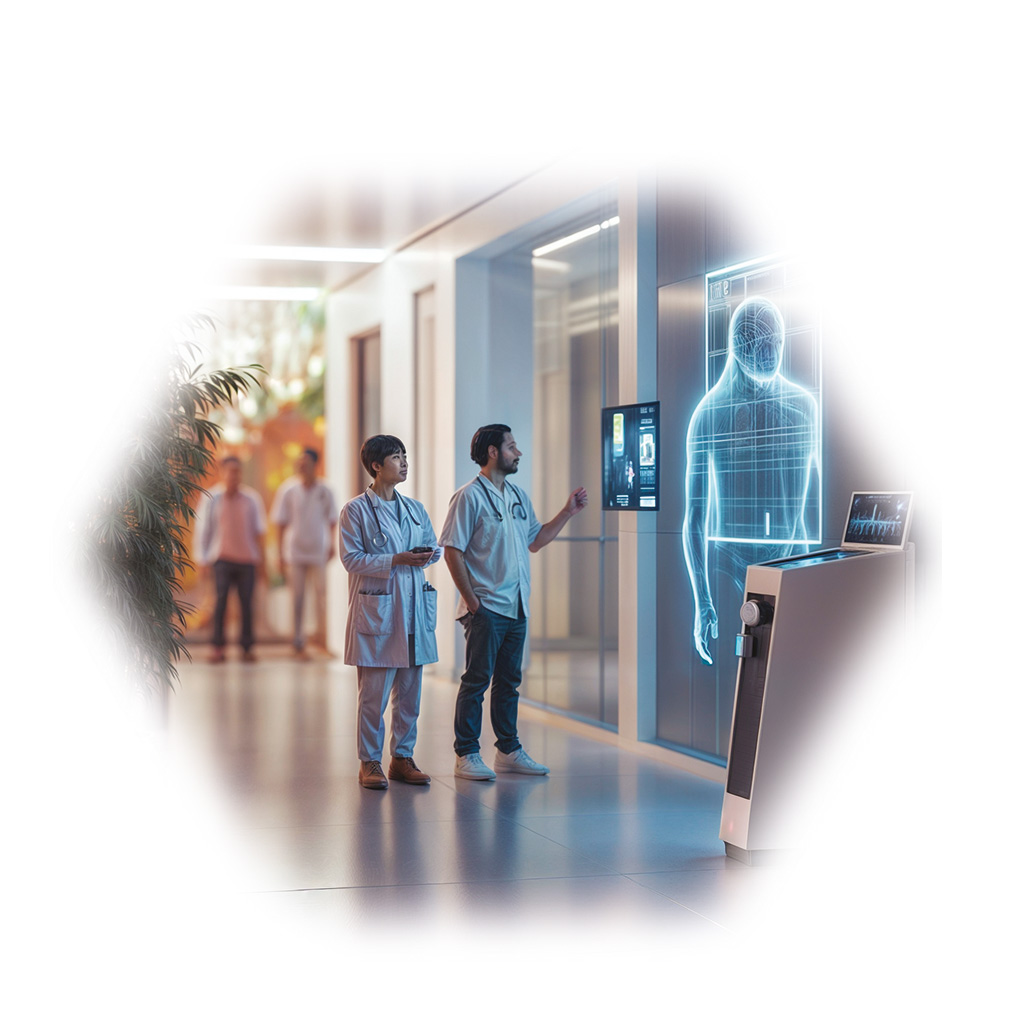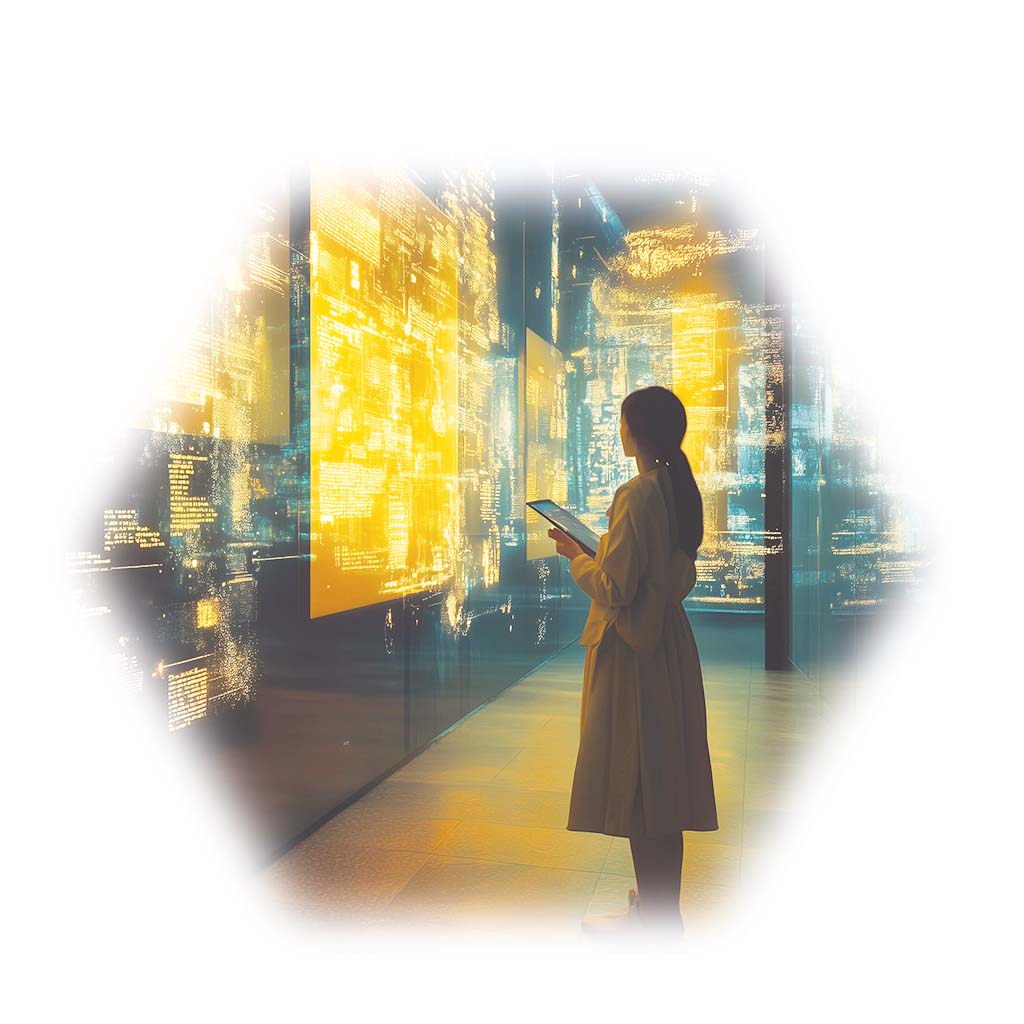Trends
An innovative leap in the evolution of humans was fostered by the introduction of language. This raises questions that fascinate anyone who wonders how it was possible for a physically weak species to eventually come to dominate the planet by cognitive and social means. The answers could also serve to lay the groundwork for thinking about the coming evolution.
The problem is simpler to ask than to solve: will the adoption of artificial intelligence be able to generate cultural and social mutations on a scale comparable to those that have occurred around previous major language innovations such as writing and software? Indeed, other major technological innovations have outsourced cognitive functions such as memory and computation, creating major evolutionary leaps. And now the technological outsourcing of text generation and its translation into all languages could have a similar impact, given that text constitutes a medium that simultaneously mirrors and shapes human thought. If this is true, automating both text generation and translation can enhance the accessibility of knowledge while also reinforcing linguistic power structures and altering some cognitive processes like information searching and the ordering and remixing of ideas. From the perspective of human evolution, these technologies could change the limits of what is possible.
With this broad perspective, we focus on one aspect of this complex question: what will be the role of a set of technologies that can simultaneously maintain linguistic diversity and break down the barriers erected by different languages? What is the evolutionary importance of language diversity and what is the evolutionary importance of the possibility of understanding each other independent of language differences? Is language diversity really the basis of incommunicability between cultures, or is there more to it than that? In this context, what realistic scenarios are opening up with the advent of reliable, easy, and inexpensive translation technologies?
What is the evolutionary importance of language diversity and what is the evolutionary importance of the possibility of understanding each other independent of language differences?
Perspective
A methodological premise is needed. Scholars have seen that the system composed of humans, technologies, and the environment is so complex that it is impossible to describe the dynamics involved in terms of linear models, with direct deterministic relationships between the involved components. Any statement such as “this technology determines this particular change in human behavior” is bound to be corrected by observation. In fact, the most fruitful approach is one that studies coevolution among all the components as the most realistic model. Of course, the timescales of biological, cultural, or technological evolution are different, but they are all part of the same system.
Transformations in the environment in which humans developed, new behaviors such as the habit of walking on two legs, genetic mutations that, for example, lead to a larger brain size, technologies such as fire, stone tools, and language have clearly undergone a process of coevolution that has given a specific character to the history of humans: a species that has never merely adapted to the environment and has often aimed to transform it. Culture and technology have been at the center of successes that have opened up new environments and new living conditions for humans. Undoubtedly, the process that generated the symbolic and linguistic apparatus that has so strengthened the cognitive capacities of people and societies has been essential to any other evolutionary phenomenon of humans.
When searching for the origins of language, scientists struggle to find material evidence. So they tend to infer the existence of language as an enabling precondition for the activities that humans demonstrate to be capable of performing, in different ages, judging from the archaeological artifacts found. Many estimate that the material life of the hominids who lived about 2.6 million years ago was so sophisticated that it required the existence of abstract thought and a symbolic form of communication different from that of apes and likely australopithecines. Language is seen as a strategic element of the whole process that gave birth to the only living species capable of using abstract signs and manipulating them to create ideas and to communicate scenarios to fellow humans that are not only about the present, but also the past and the future. In this process, a kind of social superbrain was formed that was capable of recording and processing a huge amount of information and transmitting it from one generation to the next, creating, in short, what humans call culture.
Language is seen as a strategic element of the whole process that gave birth to the only living species capable of using abstract signs and manipulating them to create ideas and to communicate scenarios to fellow humans that are not only about the present, but also the past and the future.

Imminent Research Report 2025
A journey through localization, technology, language, and research.
The ultimate resource for understanding AI's impact on human interaction. Written by a global community of multidisciplinary experts. Designed to help navigate the innovation leap driven by automatic, affordable, and reliable translation technology.
Secure your copy nowPattern Recognition
In the long period of language evolution, some regularities have been observed. For example, it has been shown that languages have a history, are not immortal, and rarely last more than a few thousand years. Afterwards, as linguist Louis-Jean Calvet shows, they transform, becoming unrecognizable, or die out, or are replaced:
– Transformation is a long-term process: the gradual mutation of one language into another, such as Latin, which gave rise to French, Spanish or Italian.
– Extinction refers to the physical disappearance of a people and its language. This can be caused by demographic reasons, genocide, epidemics, or the absence of transmission.
– Replacement is the abandonment of a dominated language in favor of a dominant one. As Claude Hagège, Professor of Linguistics at the Collège de France, points out, it is most often linked to economic and social causes.1
Similarly, one can observe the emergence of new languages, mostly derived from older languages: in these cases, all drivers of change operating in the historical context can be found in the coevolutionary processes that lead to the transformations of languages. There are changes that are linked to the functions of languages in the dimension of power, thinks Pierre Bourdieu. Traditionally, nation-states impose their language on all the territories and cultures they dominate, and even in the colonies they conquer or on immigrants who enter the country.
Moreover, it can be observed that the power of some languages also translates into functional hegemony, in particularly important areas, as is the case with the use of English in finance or science.
In the face of this use of languages as an instrument of power, however, counter-power actions can also arise from the languages of the dominated peoples.
Religions themselves use traditional languages strategically as part of their authority over the faithful, adding grounds for linguistic diversity in territories where new languages are adopted for other reasons.
There are completely different changes that are connected to the conception of language, not as a technology of functional information transmission, but as a useful and simple tool for cultivating social connections, suggests Robin Dunbar. Thus, if there are cultural hegemonies, conditions can also be created for linguistic non functional hegemonies: so that speakers of a certain language may try to learn the hegemonic language, not only for political-economic reasons but also just for social and cultural reasons, even when they are talking among themselves, in order to feel connected to the world that matters.2
In short, it can be said that there are tendencies toward linguistic homogeneity and, conversely, tendencies toward linguistic diversity, related to economic, political, and social reasons in the absence of technology that allows everyone to speak and listen in their own language, even when communicating with those who speak and listen in a different one.
Both homogeneity and diversity may have practical and evolutionary reasons. Linguistic homogeneity is consistent with the forces that fuel trade and cultural transmission. Diversity can have an even more evolutionary root: groups of limited size may be capable of solidarity, strengthening the position of their individual members when confronted with different populations. And a common language, which is different from that of opponents, strengthens group cohesion.
The Consequences of AI Translation
Given all the above, and going back to the question that this article is exploring, what will happen with the introduction of a sort of Translation AI that is inexpensive, reliable, efficient, and easy to use? Will diversity or homogeneity be strengthened? And will humans more or less be able to understand each other? It is a question naive enough to require a sophisticated answer but open to innovation. And the mindset of innovators is neither pessimistic nor optimistic: it is possibilistic. So the answer is a search for possibilities.
One neat way to address this problem might be to use Marshall McLuhan’s “tetrads” technique. This is a solution created precisely to analyze the dynamics of communication. So it can be useful in imagining the scenarios being looked for here.3

Global Professional Dealer
An intermediary between supply and demand
for professionals in the international marketplace.
The dealer not only gets to know experienced
professionals but develops a market for them
in a multilingual context.
McLuhan used his tetrads to analyze the consequences of innovations. His background is that of a literature researcher, thus he is not looking for theories that can be verified — since this thinking is about the future — but for questions that help the imagination of those who are looking for possibilities. The tetrad are, thus, a set of four questions that help enhance the thinking about innovation. As tools are extensions of humans, what do they do? How do new tools enhance humans’ capabilities and what other tools’ effects are extended? What do new tools make obsolete? What do new tools retrieve that had been obsolesced earlier? What do new tools reverse, or what is the reverse effect of these new tools when pushed to extremes?
1. What does the technology enhance?
- Extension of communication and understanding: The universal translator enhances the ability of humans to communicate across linguistic barriers, fostering global interconnectedness.
- Accessibility to knowledge: It democratizes access to written content in all languages, enabling individuals to explore texts, literature, research, and cultural artifacts that were previously inaccessible.
- Cultural appreciation: By making every language understandable, it could enhance appreciation for the diversity of human expression and thought.
- Global collaboration: It facilitates real-time sharing of ideas and knowledge across borders, accelerating innovation and cross-cultural understanding.

Inclusive Hospital
A health care system that provides care
for people of all cultures and languages,
also by using multilingual digital twins
and long distance assistance.
2. What does the technology make obsolete?
- Traditional language learning: The need to invest significant time and resources into learning new languages might diminish, as people rely on the tool for instant translation.
- Localized content barriers: The concept of “linguistic isolation,” where language serves as a barrier to participation in global discussions, might become obsolete.
- Cultural silos: The segregation of cultures due to language differences could diminish, as people can directly access and engage with content from other cultures.
- This Translation AI could also make old translation tools obsolete, such as vocabularies and databases of officially accepted translations.
3. What does the technology retrieve?
- The universal library: The idea of a repository of all human knowledge, accessible to anyone, regardless of language, evokes the vision of a modern Library of Alexandria.
- The oral tradition of shared knowledge: Universal translation mirrors the way oral traditions historically allowed knowledge to flow freely among communities, bypassing national linguistic barriers.
- Cultural empathy: It could revive a sense of global unity and mutual understanding, reminiscent of times when humans operated in smaller, more interconnected communities.
- Linguistic diversity: Ironically, it may also revive an appreciation for the nuances of individual languages, as people explore content that was once hidden behind linguistic barriers.
4. What does the technology reverse when pushed to extremes?
- Homogenization of culture: If everyone relies on translations rather than learning languages, subtle cultural meanings embedded in the original text might be lost, leading to a diluted understanding of cultural nuances.
- Dependence on technology: Over-reliance on the translator could erode personal agency in cross-cultural interactions, as people trust the tool to interpret meaning rather than developing personal insights or relationships with other languages themselves.
- Mistranslation risks: At its extreme, mistranslations or lack of cultural context in automated systems could lead to misunderstandings or conflicts.
- Loss of linguistic identity: By making all languages interchangeable, it might diminish the perceived value of maintaining linguistic heritage, leading to neglect or decline in the use of certain languages.

Geoetymology
An archive of the origin of words
and their adoption in different contexts
can serve to create a history of neologisms
and cross-cultural relations
from the present into the future.
A New Paradigm
A Translation AI that is inexpensive, reliable, efficient, and easy to use can extend the ability of humans to speak and listen to each other, no matter what language they speak. But what are the opportunities and limitations of this effect in different contexts?
- It is effective, of course, in enlarging international or interlinguistic contexts. These international spaces are already growing as new global digital platforms take hold and because of migrations. A new Translation AI could make it easier to create new platforms and environments for individuals and groups that want to build a service that can be used directly in different linguistic contexts. A multilingual country could have politicians that speak to all linguistic minorities at the same time. Public services could be offered to all speakers of any language, which could be especially important in health systems, educational systems, banking, and insurance systems. All these are examples of a Translation AI that enlarges or changes the ecocultural niche where humans live, but only for simple matters, in which the standard type of translations that a machine — however reliable — can generate are enough.
- Acceptance of a technology such as this is a function of its price and ease of use, but also of the motivation to use it, which in turn also depends on who is proposing it. It might be rejected, for example, if whoever owns and proposes (or imposes) it is seen as a great foreign power, alternative to the development strategies of those who should use it. Linguistic diversity can in some cases be seen as a way for building a defence against foreign or alien powers. Diversification of Translation AI could be an outcome of this kind of problem: big, super powerful companies are strong, but their dimension can sometimes become a weak point.
- Translation AI will reduce the cost of translating to near nothing, which, even with a strong and growing demand, will reduce the profit for companies that offer a translation service. Given that fact, new business models, technologies, and human professionals could be created and hired in order to offer better, nonstandard translations for special social and economic needs (such as a need for real understanding between humans, a need for a meaningful communication, and so on). These new socio-technical models — i.e. models made of humans and augmented by machines — should gain strength by demonstrating how they are able to manage the complexity of real human understanding.

Eduglobal
A lifelong learning system
that enables diverse communities
to contribute to youth and
adult education in any language.
We already can see how new eco-cultural niches are being created by new technologies. And we know how difficult it is to foresee the real dynamics that work. As for Translation AI, we can just imagine hospitals in which immigrants — doctors and patients — will better understand each other with clear benefits, schools with immigrants will deal better with those who don’t speak the local language, and public administrations that will be better equipped to deal with people coming from abroad. We can also imagine politicians who speak to their multilingual constituencies in all different languages, which is already starting to happen as the German President’s speech at the beginning of 2025 has showcased. And we can imagine companies that use professionals from different countries, making teams for specific projects and having them understand each other with less friction than today.
But we can also imagine the creation of new languages precisely meant to make this total understanding — and this new form of control — work. Powers and counterpowers will always confront each other.
AI translation has the potential to reshape human communication in the context of a general linguistic automation process that can be as profound as writing or the printing press. However, whether it fosters understanding or simply removes superficial barriers will depend on how societies choose to integrate it into their cultural, economic, and political structures.

Luca De Biase
Editorial Director
Journalist and writer, head of the innovation section at Il Sole 24 Ore. Professor of Knowledge Management at the University of Pisa. Recent books: Innovazione armonica, with Francesco Cicione (Rubettino, 2020), Il lavoro del futuro (Codice, 2018), Come saremo, with Telmo Pievani (Codice, 2016), Homo pluralis (Codice, 2015). Member of the Mission Assembly for Climate-Neutral and Smart Cities, at the European Commission. Co-founder of ItaliaStartup Association. Member of the scientific committee of Symbola, Civica and Pearson Academy. Until January 2021 he has chaired the "Working Group on the phenomenon of hate speech online", established by the Minister of Technological Innovation and Digitization, with the Ministry of Justice and the Department of Publishing at the Presidency of the Council. He has designed and managed La Vita Nòva, a pioneering bi-monthly review for tablets, that has won a Moebius Award, 2011, in Lugano, and a Lovie Award, 2011, in London. His work has been honored with the James W. Carey Award for Outstanding Media Ecology Journalism 2016, by the Media Ecology Association.
References
1. Louis-Jean Calvet, Il était une fois 7000 langues, Fayard 2011 – Claude Hagège, Halte à la mort des langues, Odile Jacob 2001
2. Pierre Bourdieu, Langage et pouvoir symbolique, Seuil 1992 – Robin Dunbar, Grooming, Gossip and the Evolution of language, Harvard University Press 1997.
3. Marshall McLuhan, Eric McLuhan, Laws of Media: The New Science, University of Toronto Press 1988.


